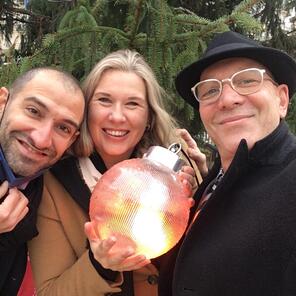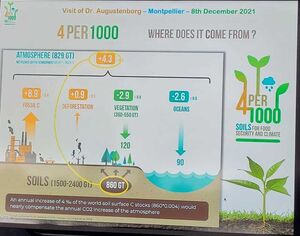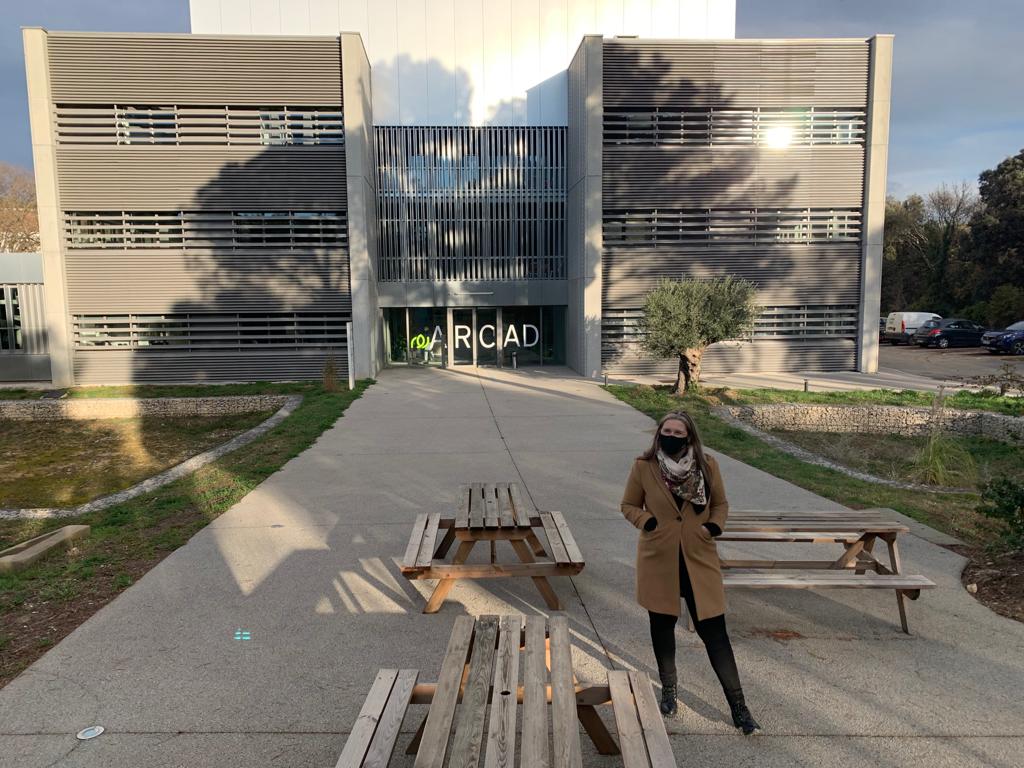| We’re not in Paris anymore, Toto! Today, I woke up in Montpellier after an exciting high speed train journey last night with my two amazing guides. Following a quick visit to Montpellier's main plaza, we headed off by tram to Agropolis International to meet those responsible for the famous “4 pour 1000” soil initiative launched at COP21 in 2015. I remember the moment at the Paris climate conference when this initiative was brought to the world’s attention. At the time, I was skeptical as to whether “4 pour 1000” was green genius or green washing, so this week, I asked to meet the scientists behind it to find out for myself. |
| While “4 per 1000” may sound more like a diet yogurt than science, the idea of the initiative is to increase the carbon content in soil globally by 0.4% per year. By doing so, we could offset all the carbon dioxide emissions we currently burn to the atmosphere. Theoretically, this is possible. If you consider climate change as a giant, global math problem, soil carbon could help to balance the equation. |
| | After lengthy discussions with the several institutional representatives involved in 4 pour 1000, Dr. Luu took us to one of his favorite local restaurants for what was my best traditional French lunch yet. Local, seasonal wine and food is an absolute passion for the French, and I couldn’t help but get caught up in the excitement gushing from my colleagues over every decision about what touched our precious palates. |
| Fortunately, we walked off some of that lunch over a tour of CRNI’s Ecotron facility, where Scientific Director Alexandru Milcu explained the centre’s role in simulating real world and future climatic conditions to see how different plant species and soil organisms respond to a variety of conditions. It’s a one of a kind, impressive facility that allows us to see how nature might adapt to climate change or to help us understand more about the environmental conditions in past climates. Alex was particularly excited about the research they hope to undertake soon on basalt waste powder from the mining sector as a possible amendment that could help store much more carbon in soil and help us achieve that “4 pour 1000” goal in some parts of the world. | |
| From there, we headed to the ARCAD platform – a new research facility that stores and studies hundreds of varieties of seeds for cultivated food and energy crops used in the Mediterranean and tropical regions. This research allows us to understand what plant varieties will provide the most nutrition and resilience in a changing climate. It was exciting to be one of the first guests at the facility and see the state-of-the-art technology used to store and analyze seeds. |





 RSS Feed
RSS Feed
